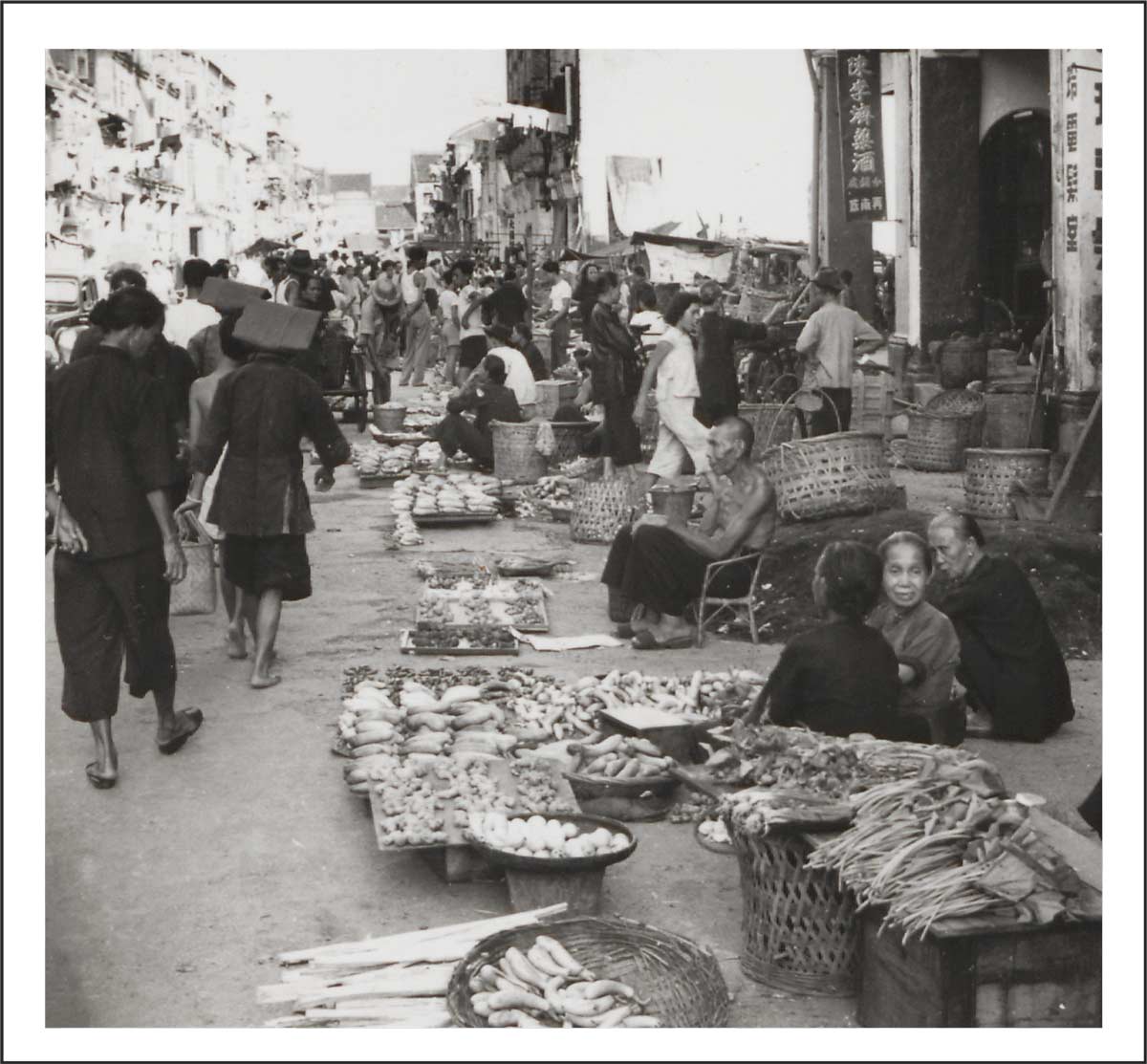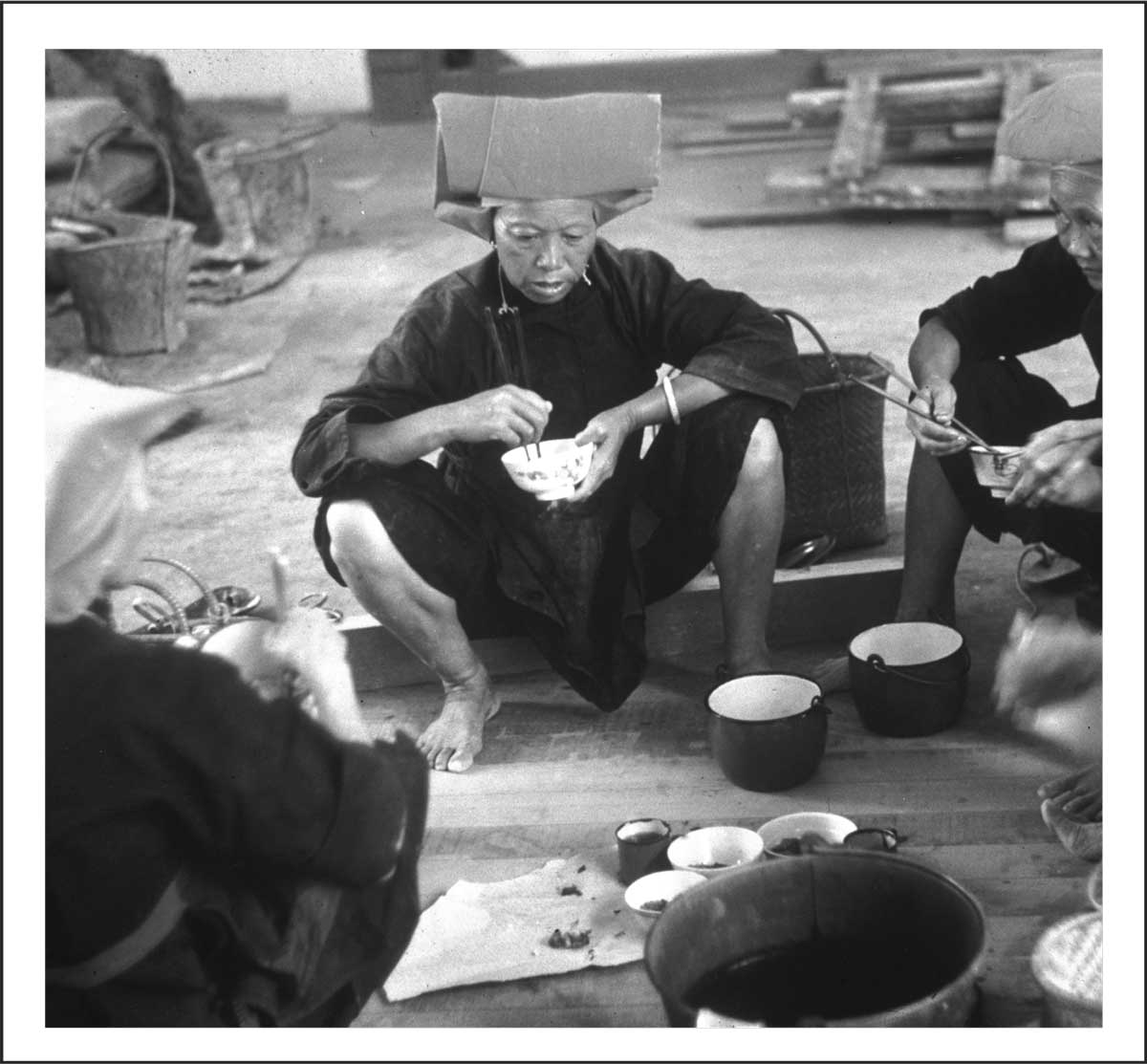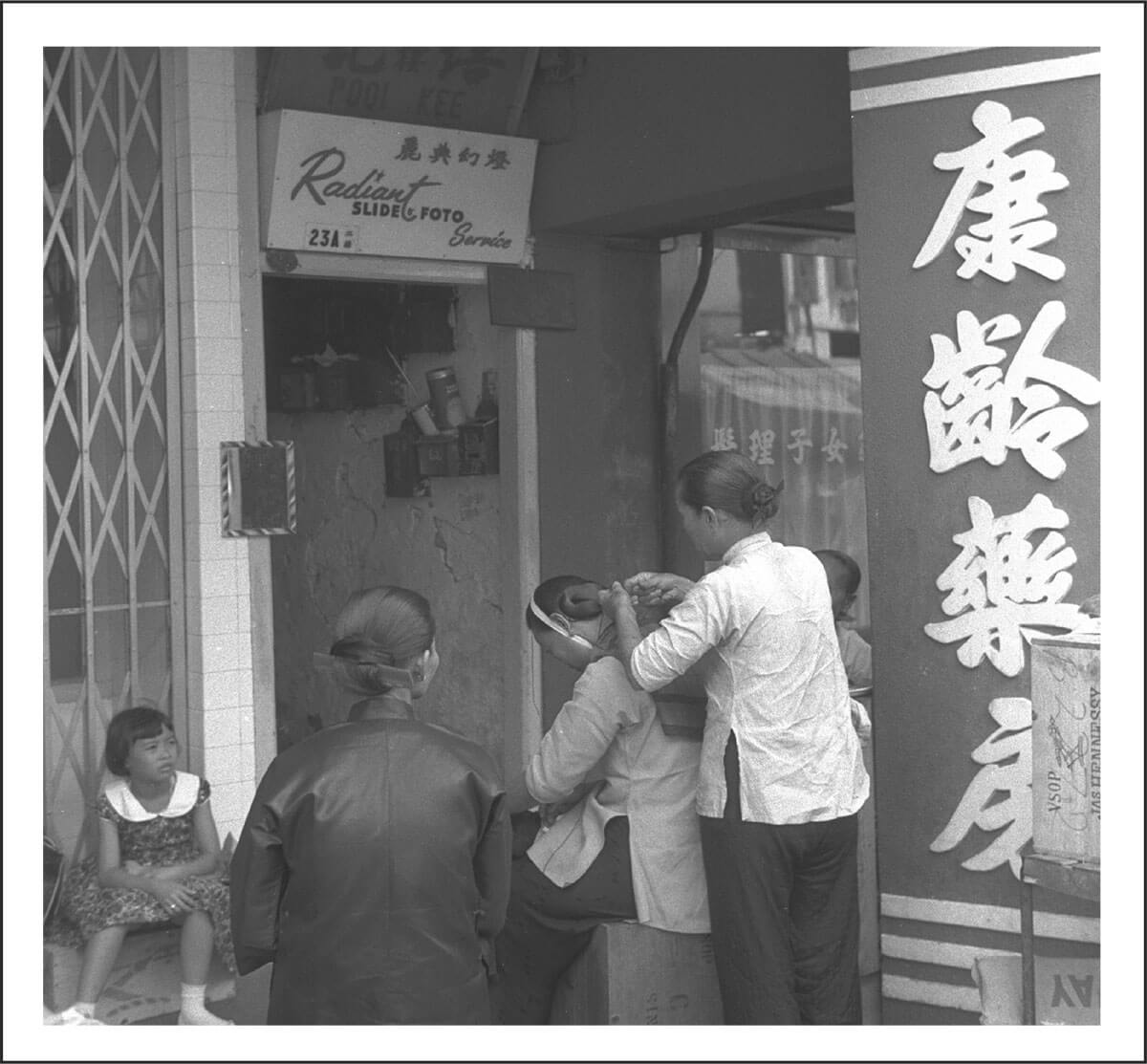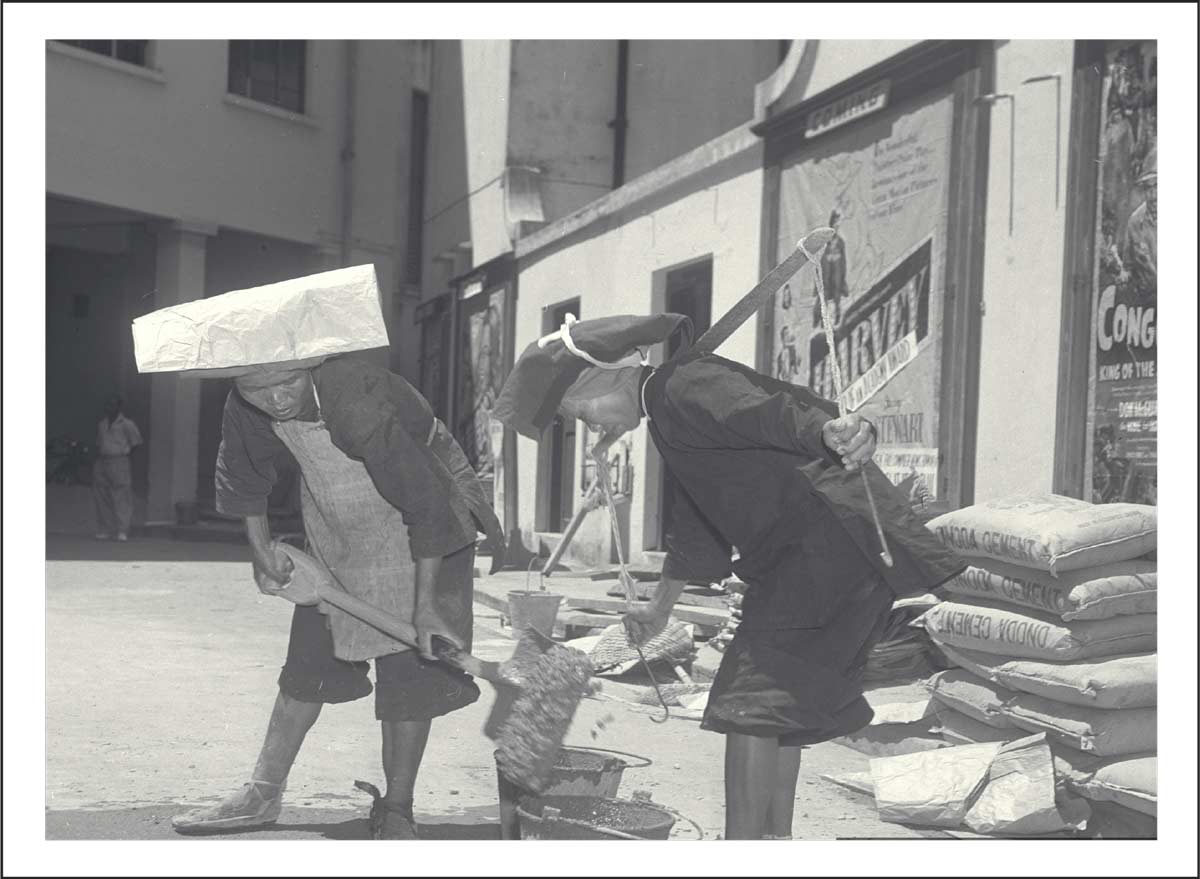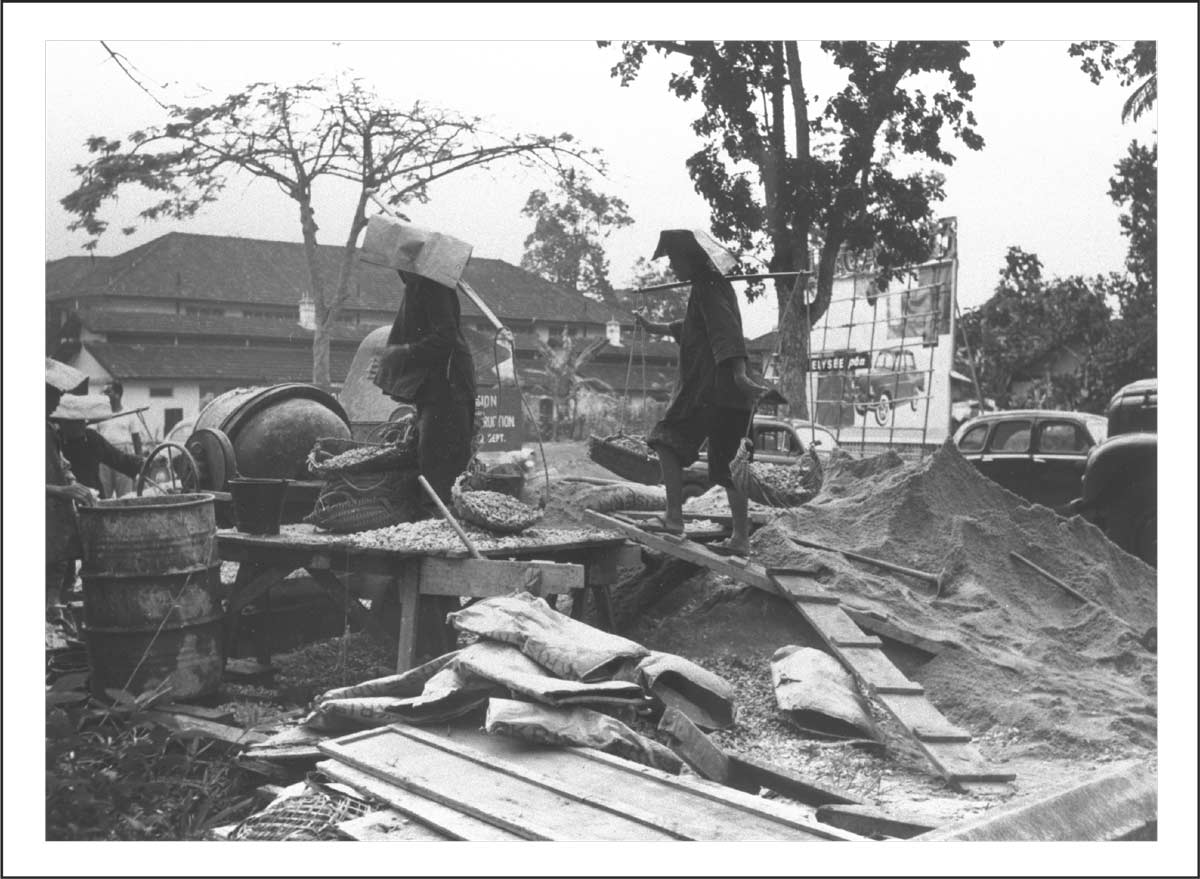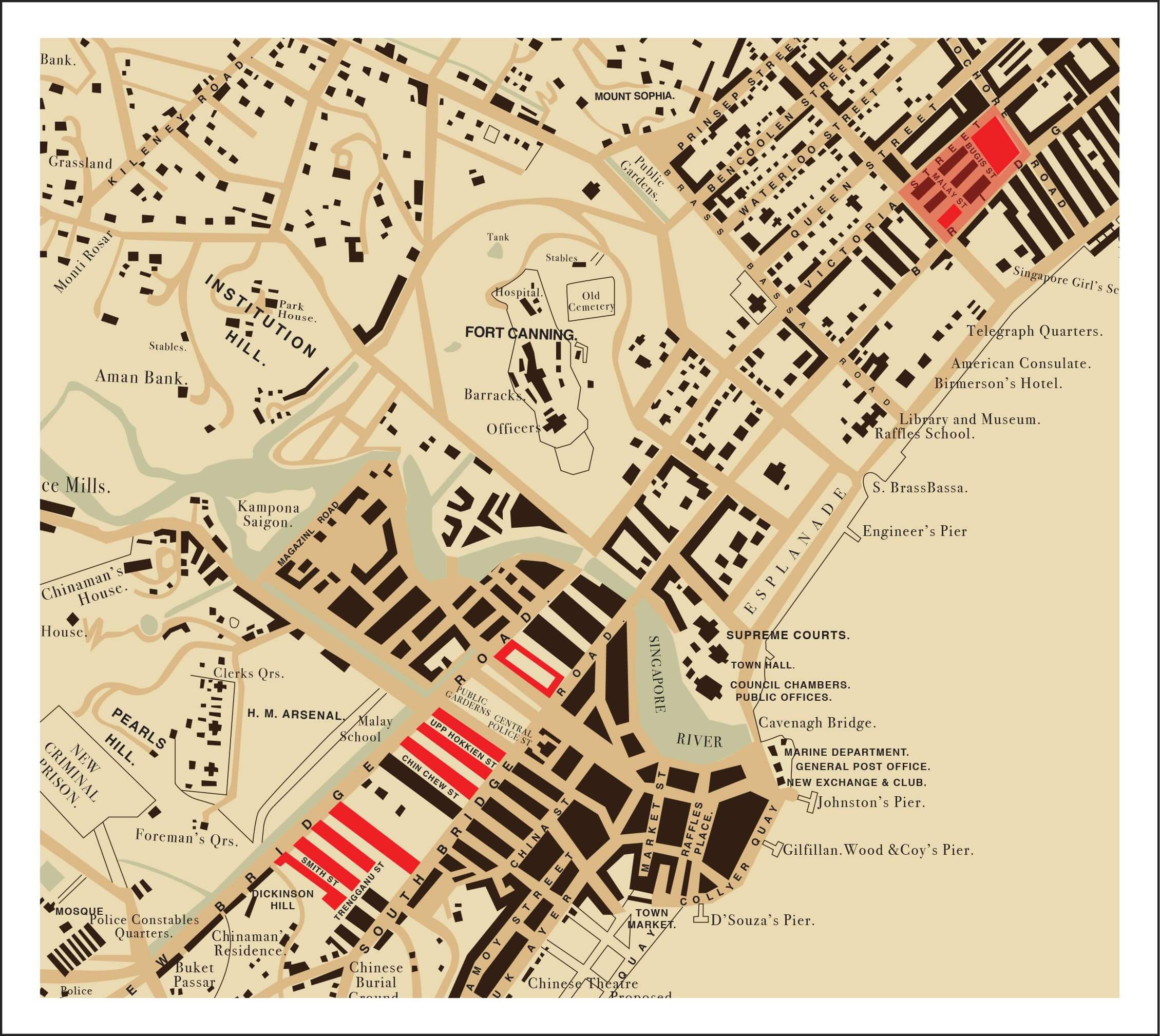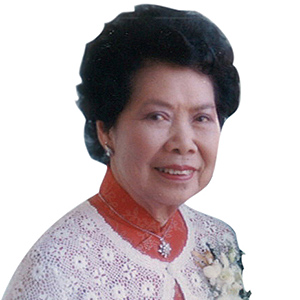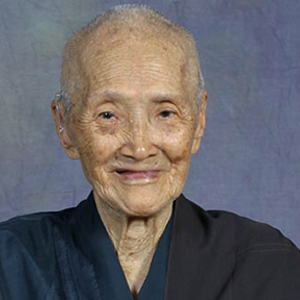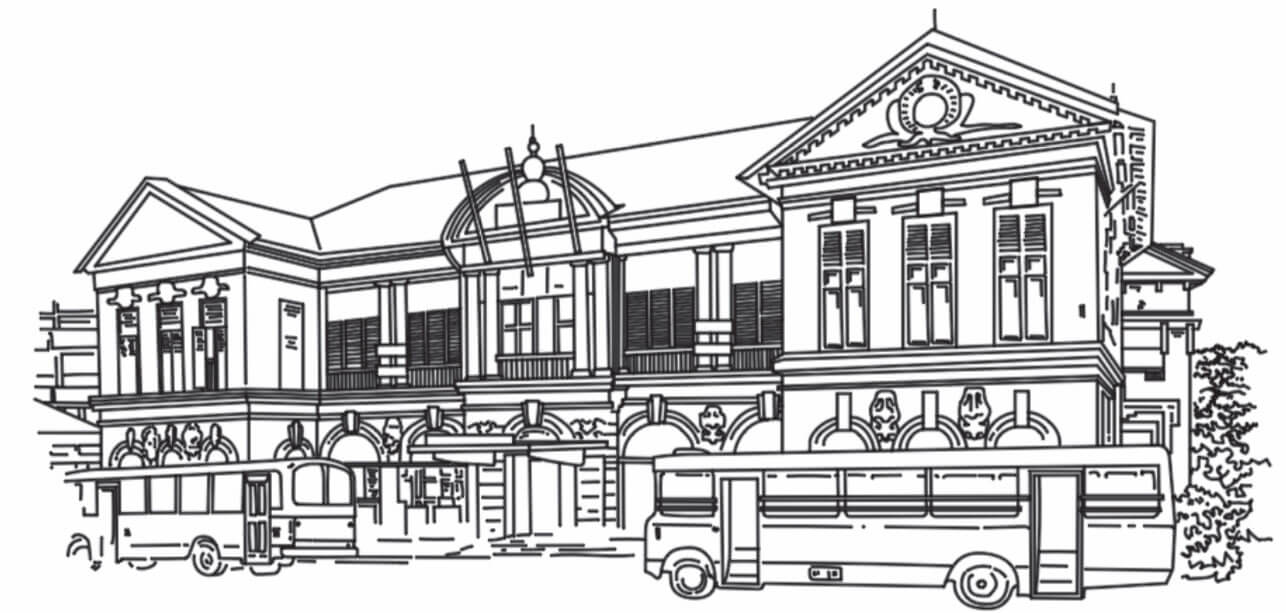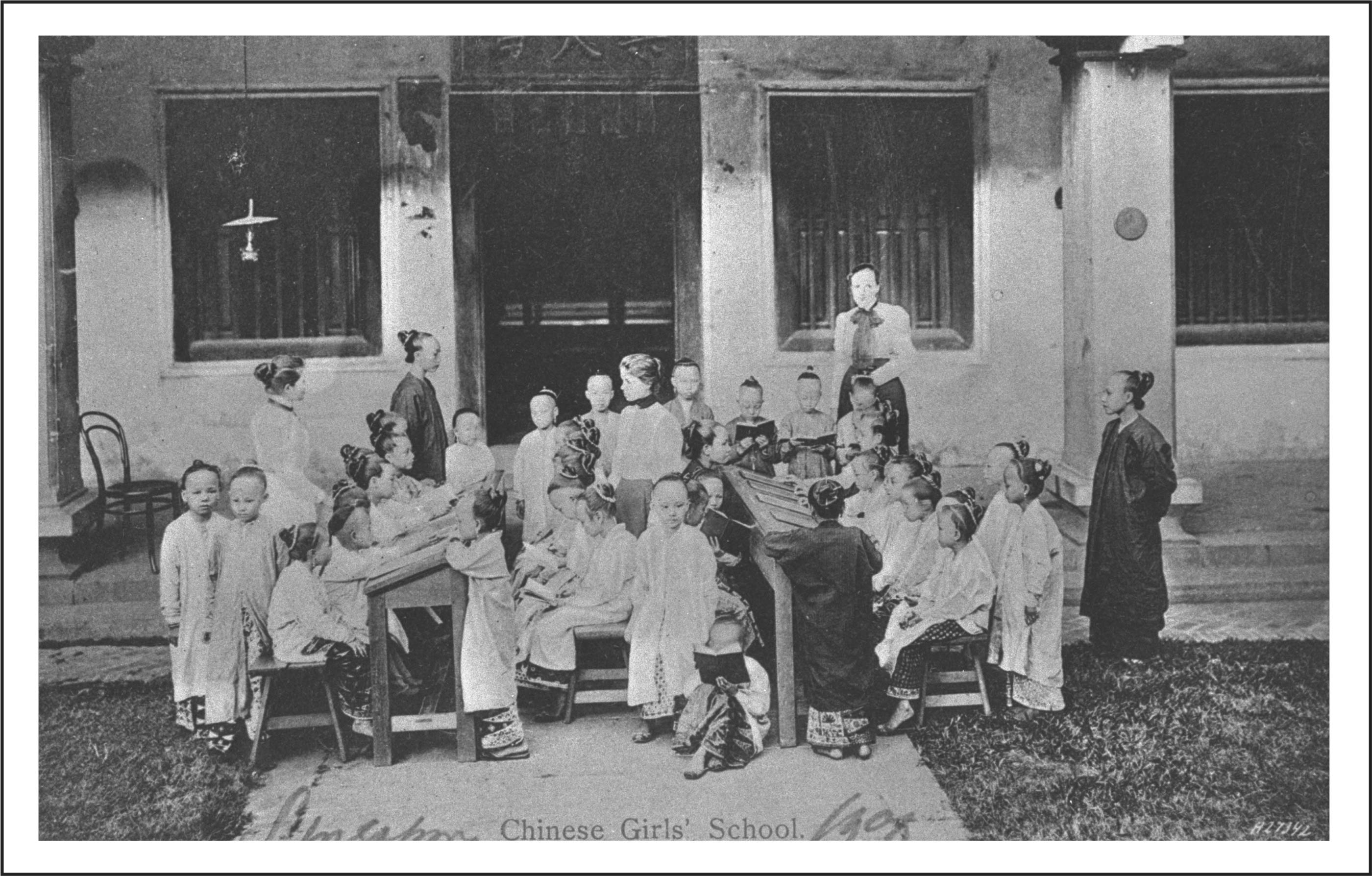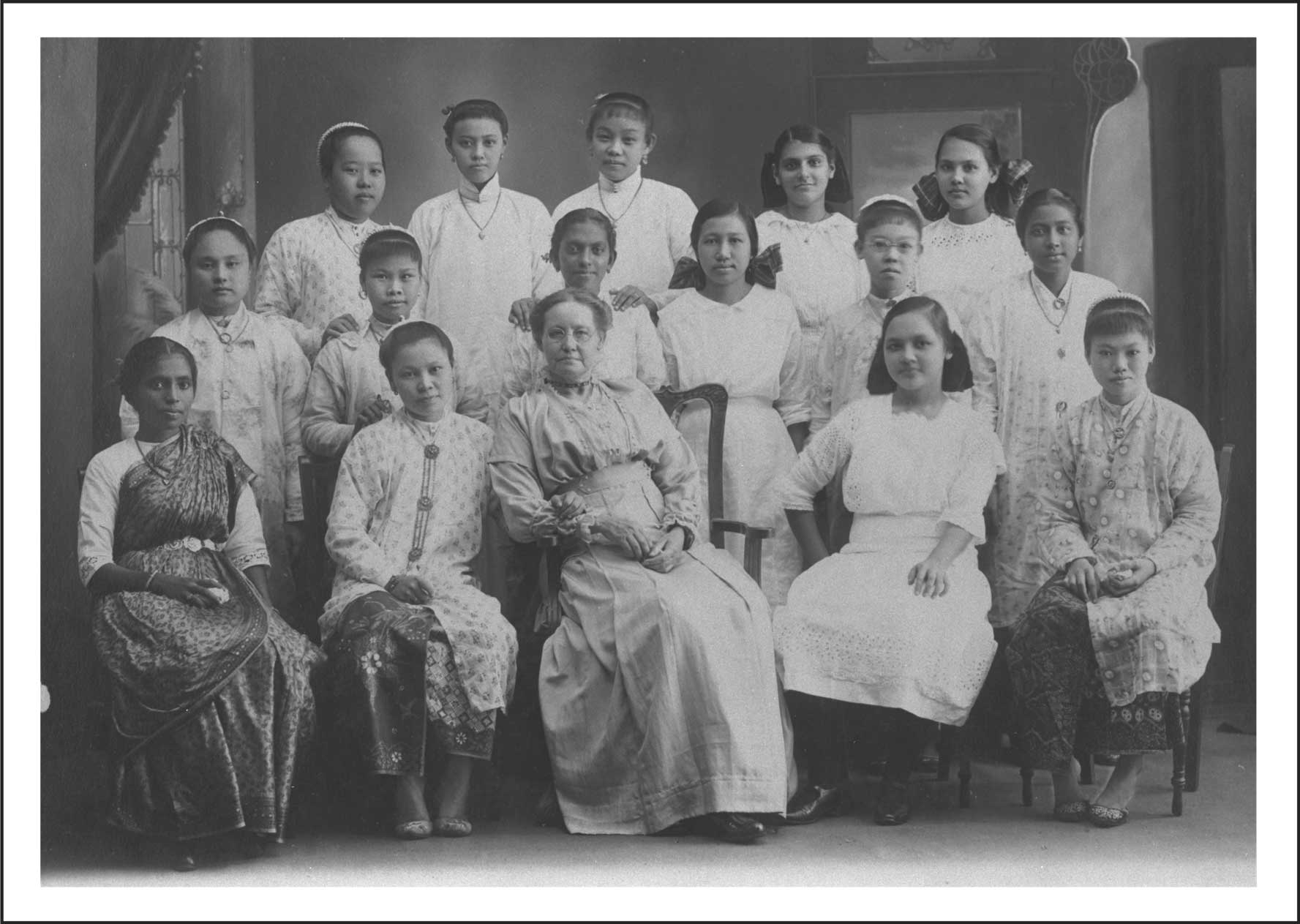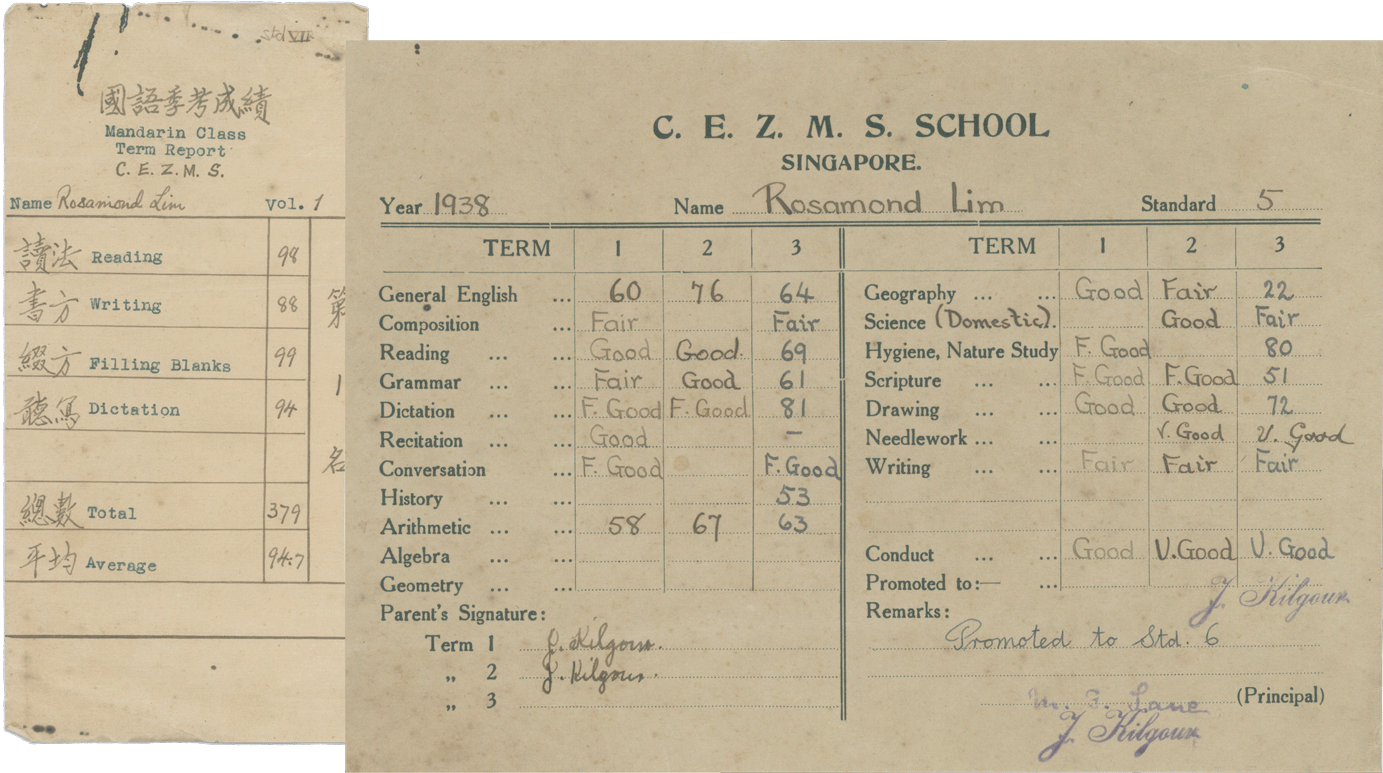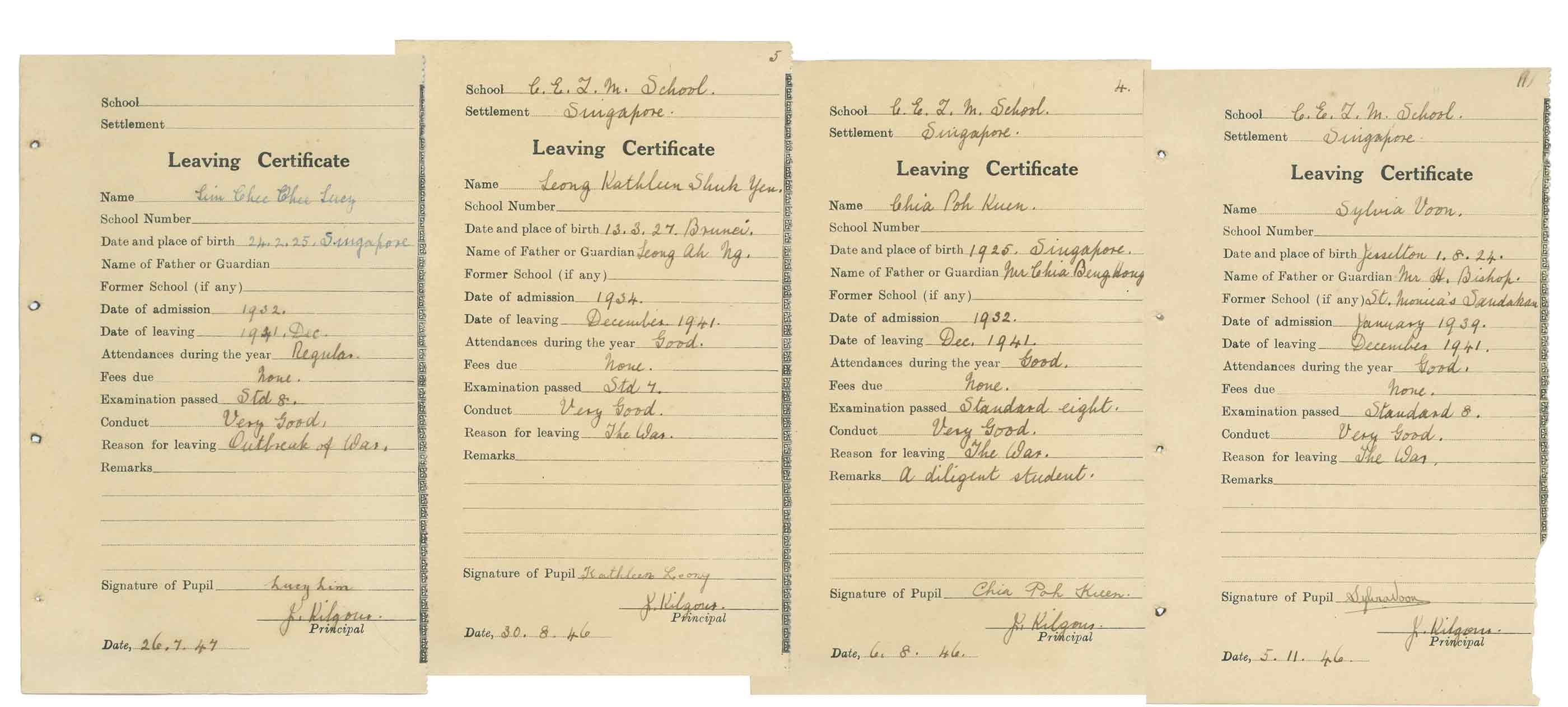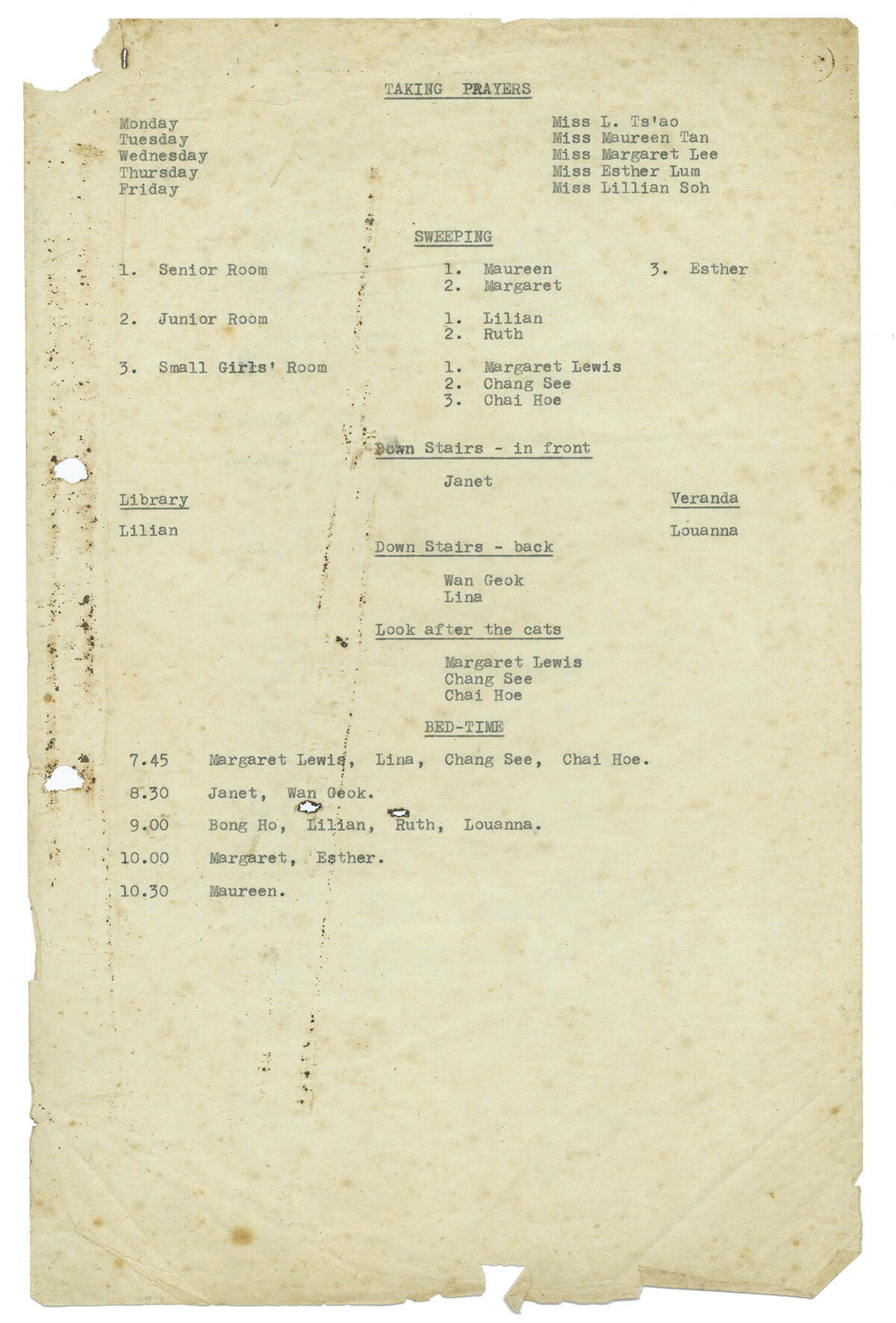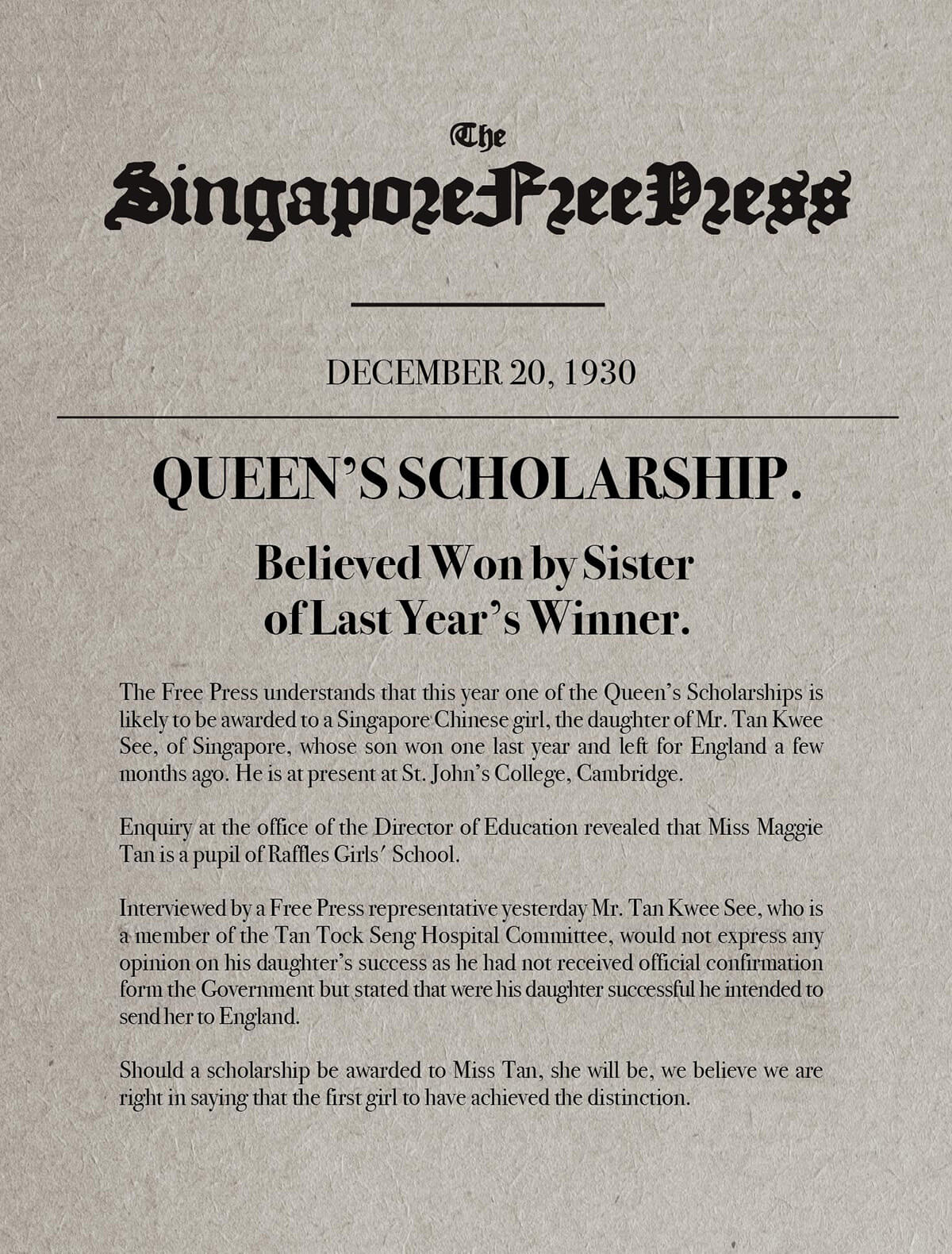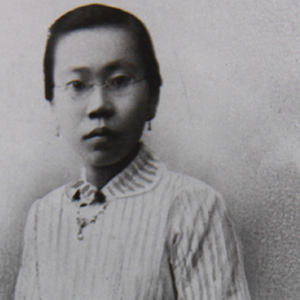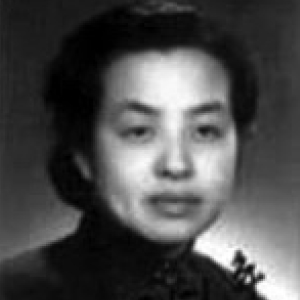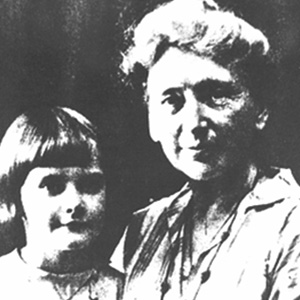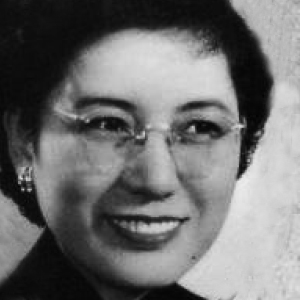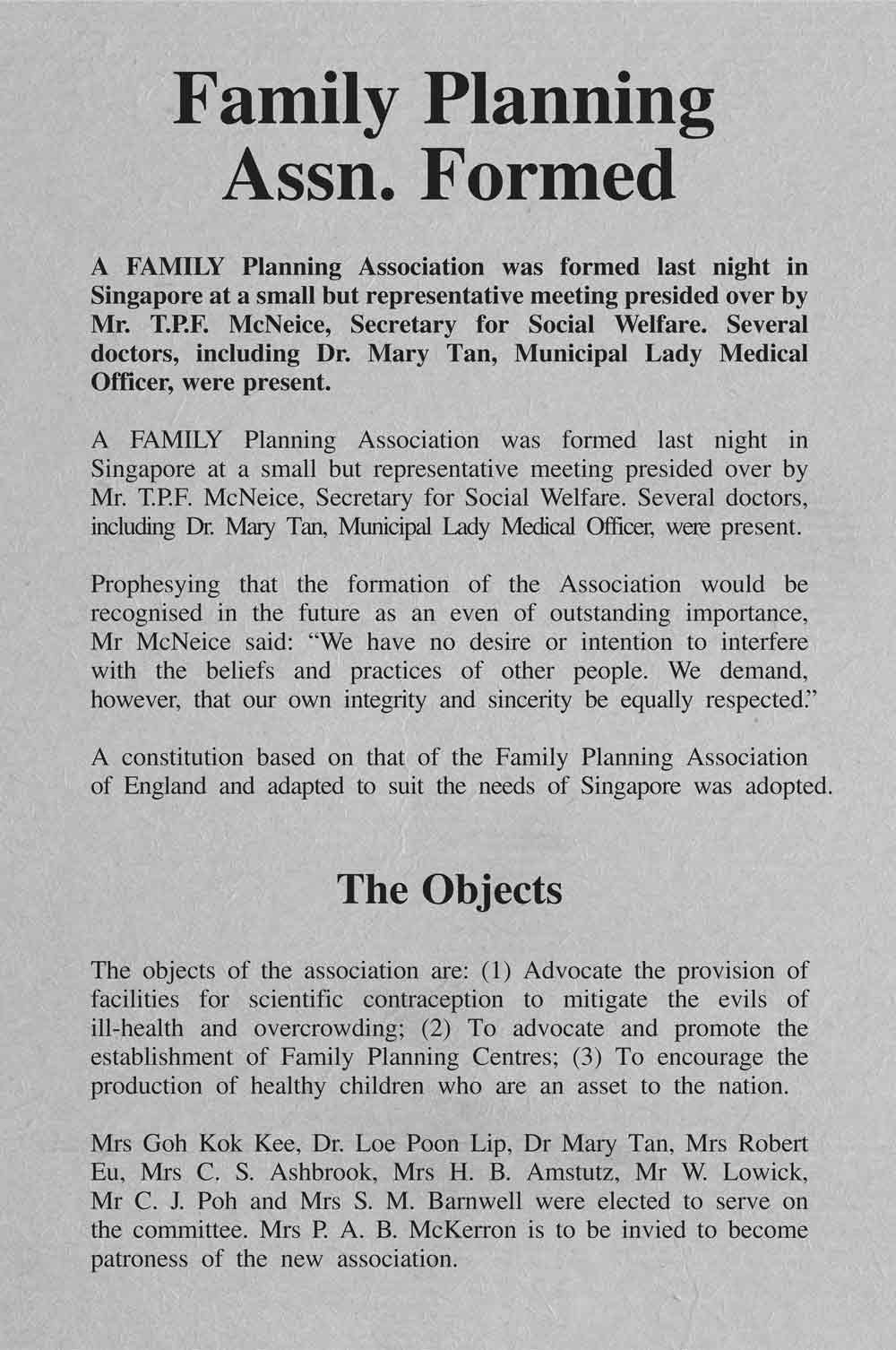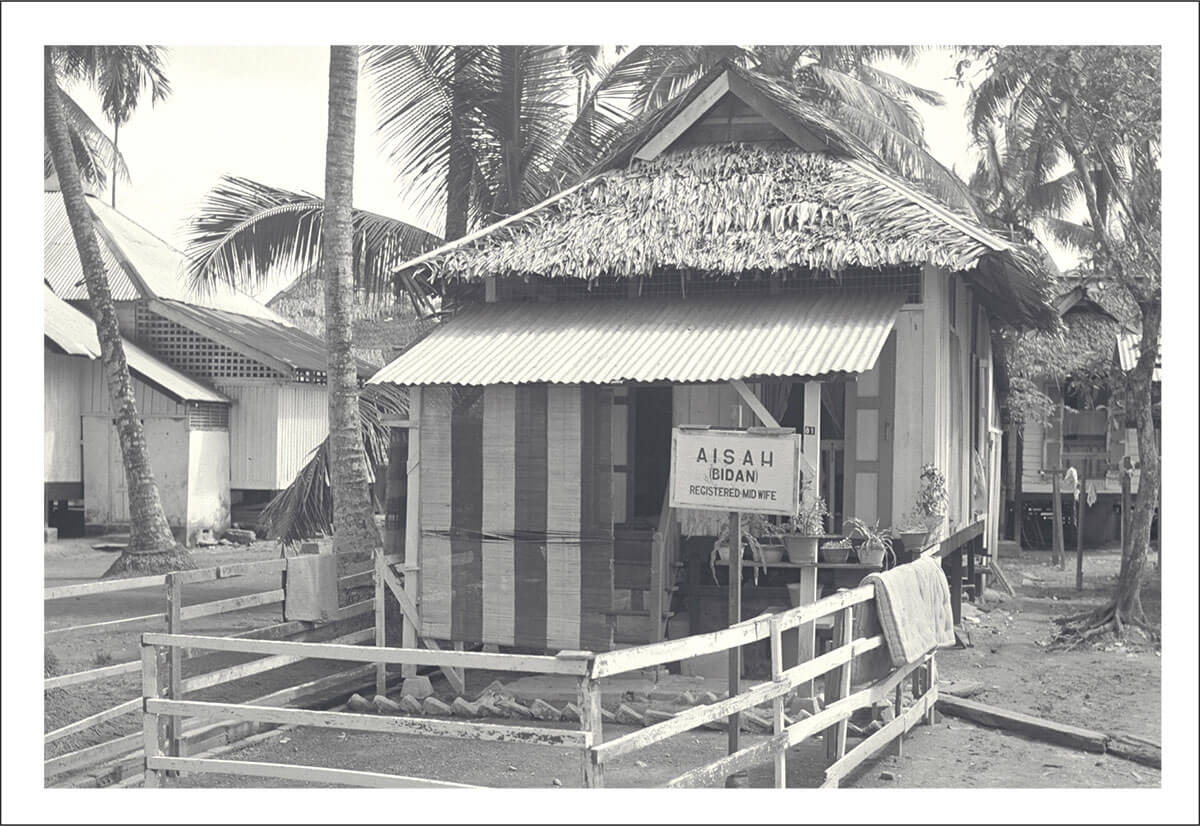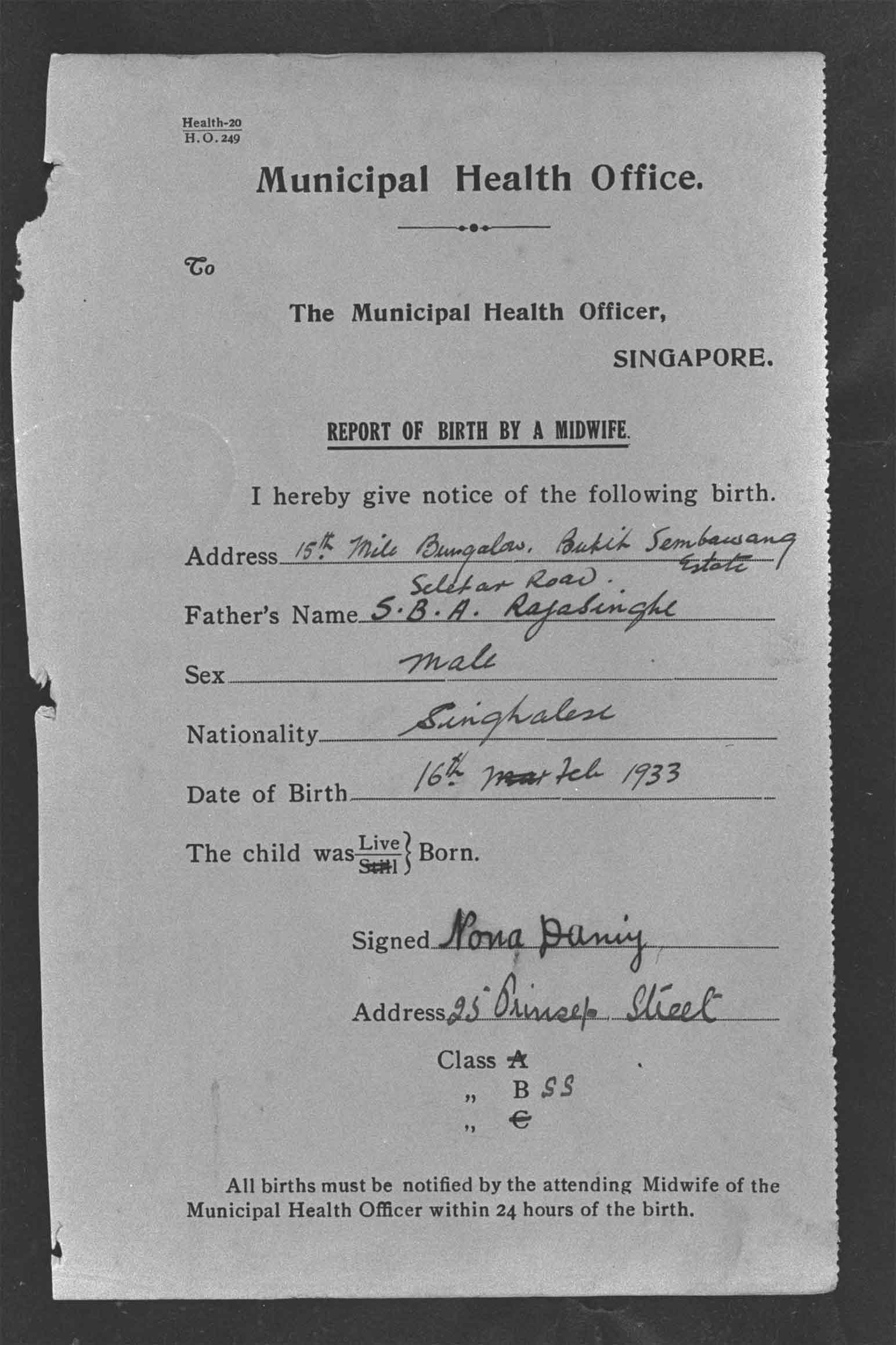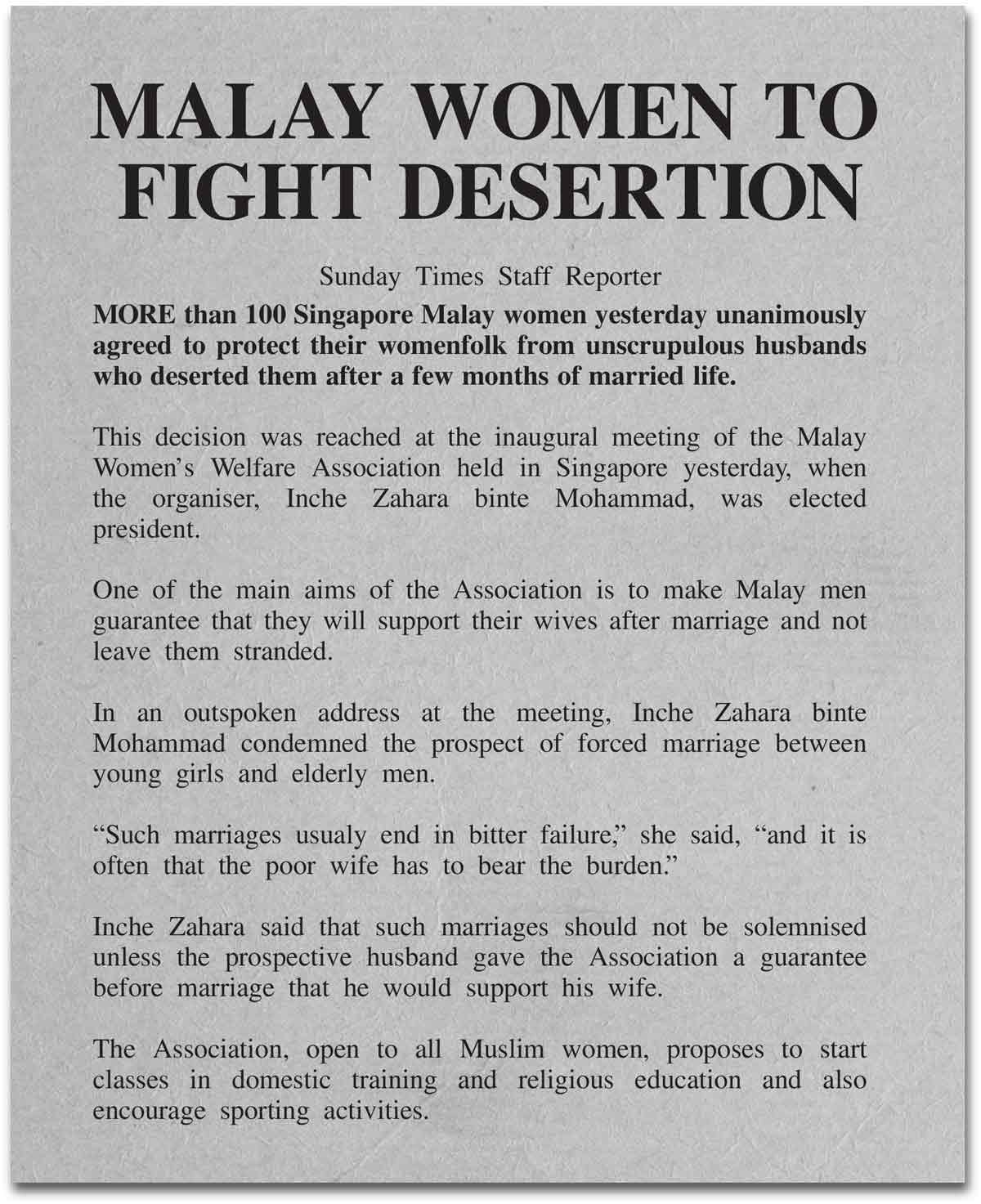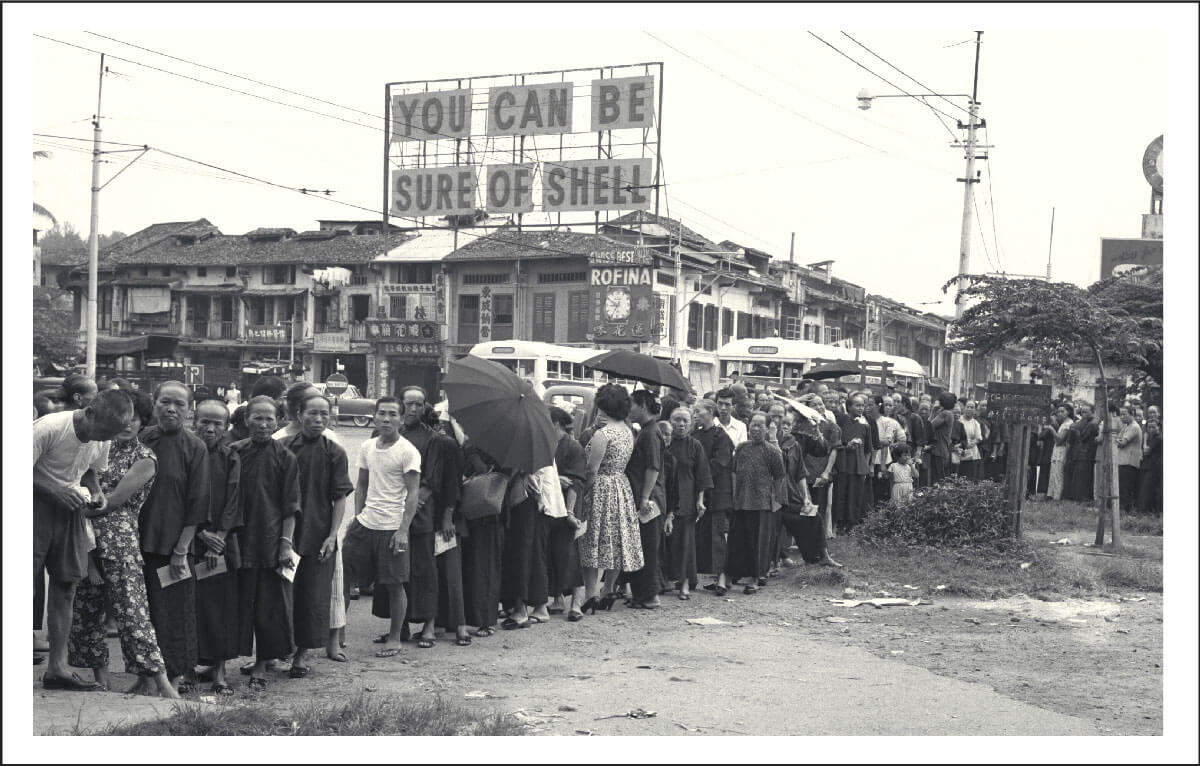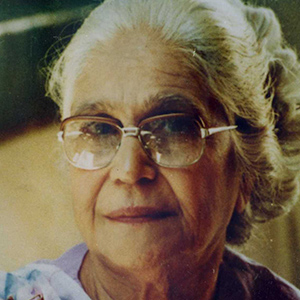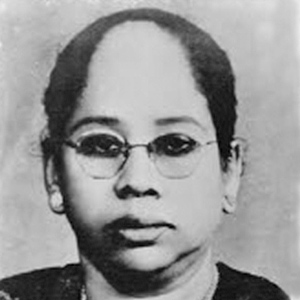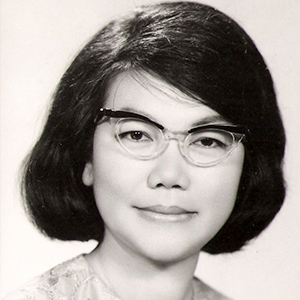What was life like for women in pre-Independence Singapore?
The first of a three-part series by the Singapore Women’s Hall of Fame
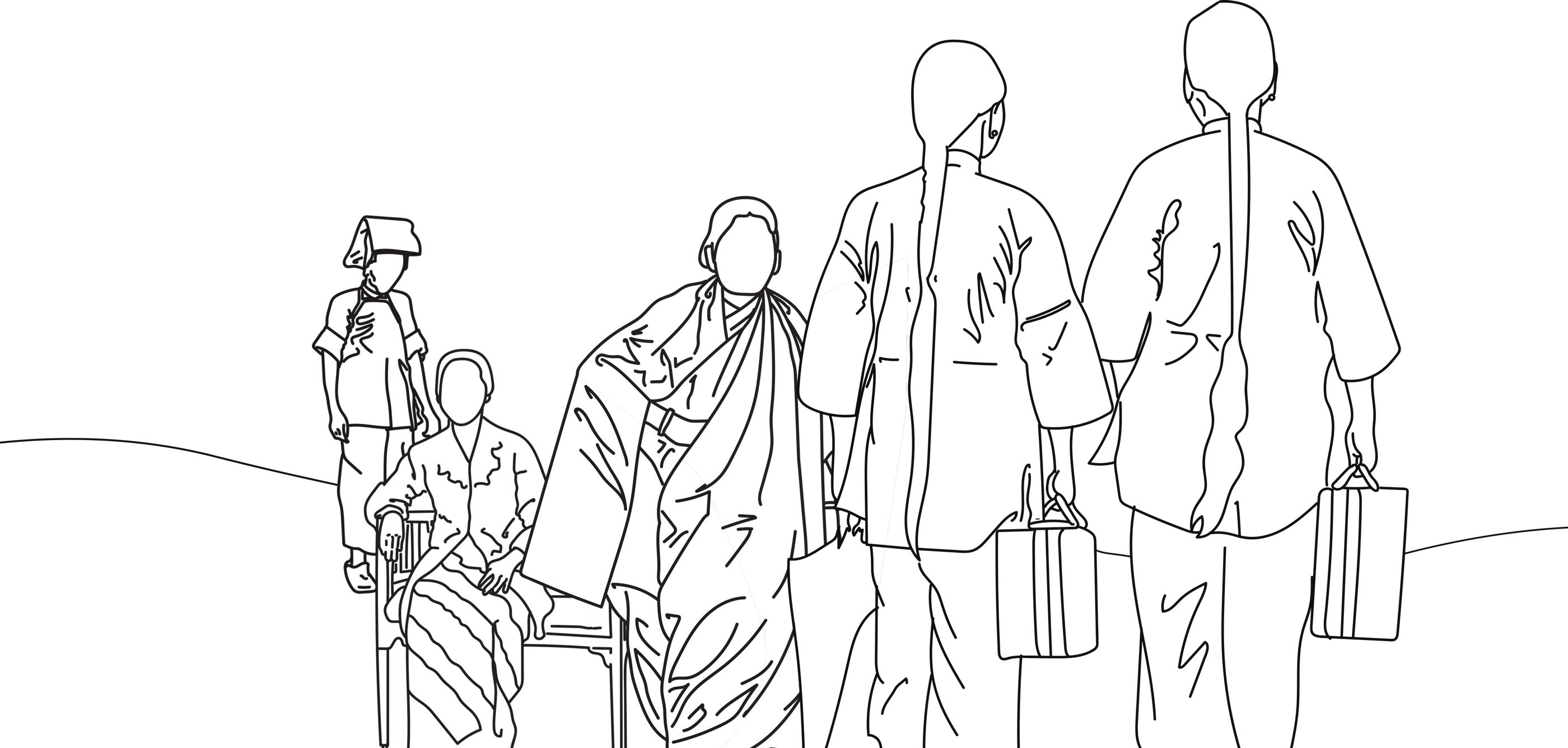
It’s a man’s world
When Sir Stamford Raffles arrived in Singapore in 1819, there were about 150 people living here. As the ‘‘great commercial emporium’ that he set out to build in Singapore began to take shape, hundreds and then thousands of labourers and traders flocked to Singapore from neighbouring areas, and from China and India. By 1824, the population had grown to some 11,000. By the first proper Census in 1871, there were nearly 100,000 people in Singapore. Most, however, were men.
The Chinese and Indian men who came to Singapore in the 19th century and early 20th century looking for work could not afford to bring their wives and families with them. So early Singapore was mainly a man’s world. In 1860, there was just 1 woman for every 6 men. The imbalance was greatest in the Chinese community, with 1 woman for every 14 men. In the late 1920s, quotas were set for male Chinese immigrants and the sex ratio began to improve.
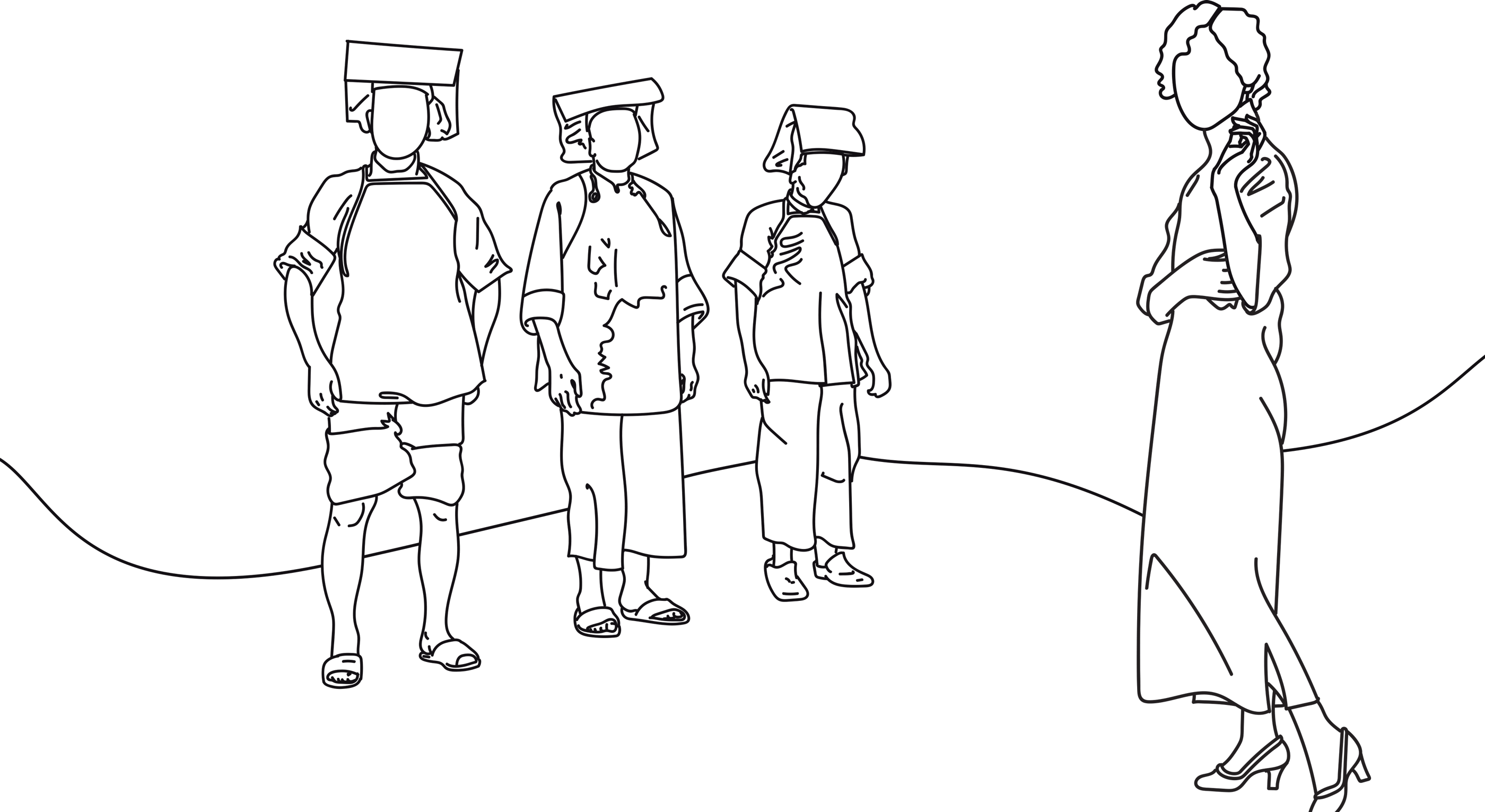
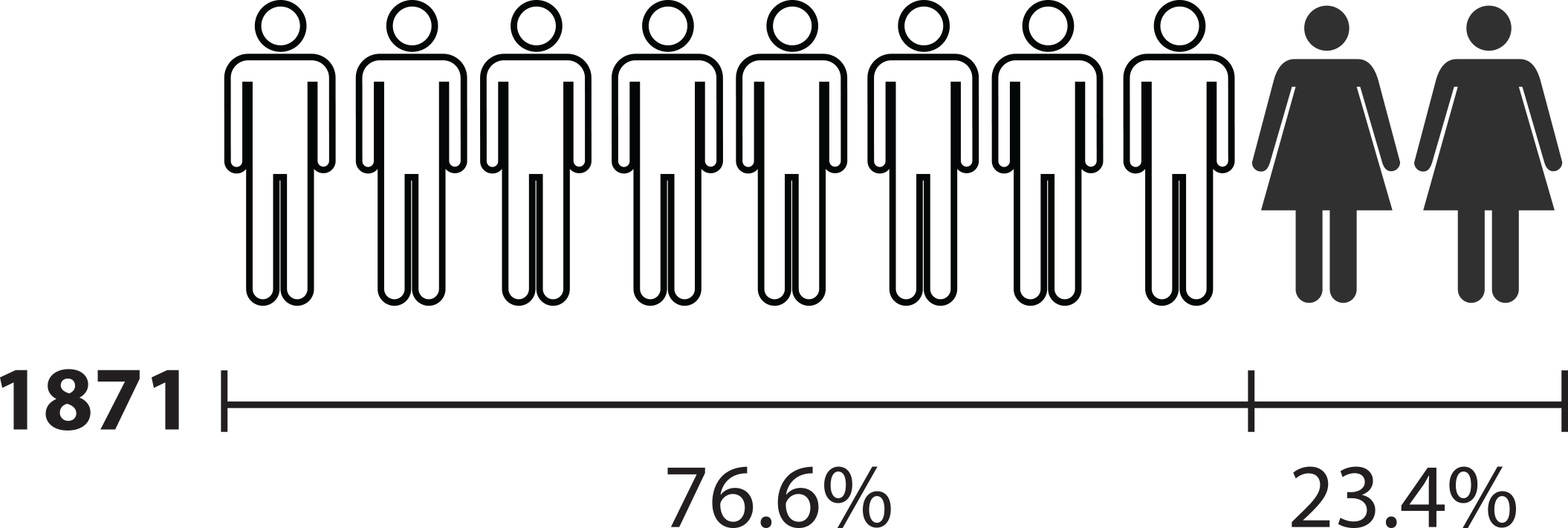




She works hard for the money
In the 19th and early 20th century, some of the women in Singapore were the wives and relatives of successful men. The rest were mainly working women, mostly from China. There were 2 categories of working women - the girls and women who had been trafficked as bondmaids and prostitutes; and independent women, often single, fleeing poverty to find work here as labourers and domestic servants.
Sisters are doin’ it for themselves
When China’s silk industry was hit by the global Great Depression that began in 1929, thousands of women came to Singapore and Malaya in search of work. Many were single, and often they travelled together in pairs or as a group.
In Chinatown, they had a bed or a cubicle in a ‘coolie fong’, which provided not just a communal space but also a support network. They found work on construction sites as Samsui women, or in domestic service as amahs.
Their work was menial and tough but, unlike the well-born women, they had skills and financial independence.
Did you know?
- In 1955, an amah working with a European family could earn $140-$180 a month. This was as much as what an English-speaking clerk earned, and more than what waitresses, cashiers and hairdressers were paid.
- In the 1930s, Samsui women would go each morning to Upper Chin Chew Street to look for ad-hoc work. Their daily wage was usually 50 to 60 cents. The monthly rent for a bed in a shared cubicle ranged from 80 cents to $1.20.
Mama-sans and
little sisters
Extreme poverty in the rural areas of South China during the second half of the 19th century saw many parents selling or giving away their young daughters. Some of these girls became mui tsai (little sisters) or bondmaids who worked as servant girls in wealthy households. Others ended up in brothels.
Prostitution was a thriving business in Singapore in the late 19th century. There were hundreds of brothels, mostly controlled by secret societies.
Prostitution was only made illegal in 1930.

JANET LIM CHIU MEI
First local hospital matron and best-selling author
(1923 - 2014)
Janet was sold as a bondmaid and sent to Singapore in 1930/31. She resisted all efforts of the master to bed her. In 1933, she was one of 706 girls registered under the Mui Tsai Ordinance of 1932. She was taken to an orphanage, then to CEZMS (St Margaret’s School). She qualified as a nurse in 1941, and later became the first Singapore nurse to get further training in Britain. In 1954, she became Singapore’s first Asian hospital matron. In 1958, her best-selling Sold for Silver was published. It was the first autobiography in English by a woman in Singapore.
HO YUEN HOE
Abbess and charity-worker extraordinaire
(1908 - 2006)
Sold and resold several times as a child in China, Yuen Hoe married at 15 and moved with her husband to HK at 19. When she realised her husband was in the opium trade, she left him and did odd jobs to earn money. She came to Singapore in the late 1930s. For years she worked in Chinatown as hairdresser to Samsui women and amahs. She saved enough to buy property and set up the Man Fu Tong (MFT) Mutual Aid Association, an informal bank for Chinese immigrants. In her 50s, she studied Buddhism and was ordained as a nun. She then set up a temple and the MFT Nursing Home for destitute, elderly Samsui women.
Did you know?
- In 1863, 500 young girls were brought in by secret societies and sold for between $100 and $400 each. It was estimated that in the 1870s, 80% of the young girls who came to Singapore were sold to brothels. (Peasants, proletarians and prostitutes; Song, 1925; Purcell, 1967; Comber, 1959; Turnbull, 1977)
- Sago St had at least 28 brothels in 1902 (Ah ku and karayuki-san : prostitution in Singapore, 1870-1940 / James Francis Warren)
- In the 1920s there were an estimated 7,000 to 10,000 bondmaids in Singapore. The prices paid for them ranged from $50 to $260.
Girl on fire
Ironically, it was the impoverished, abused and orphaned girls who were the first in Singapore to get some formal education. The patriarchal attitudes of the times meant that fathers saw no need to educate daughters, and well-born women were not supposed to be seen too much in public. It would be years before girls from the privileged families went to school.
But in the later part of the 19th century, the more enlightened fathers began to want their daughters to get educated. Businessman Tan Keong Saik, for example, arranged for Sophia Blackmore to tutor his three daughters at home. This was a few years before Sophia founded MGS in 1887. Others sent their daughters to the existing girls’ schools or started new schools for girls.
Some of the girls who had the benefit of education turned out to be remarkable, pioneering women.
First school for girls
British missionary Maria Dyer and her husband stopped in Singapore in 1842 while on their way to China. Maria was horrified to see young girls being auctioned as mui tsai or bondmaids. She felt she had to do something to help these girls. Later that year, she opened a school for homeless girls in a shophouse along North Bridge Road. It was not just the first school for girls in Singapore but in all of East Asia. By the turn of the century, there were four other schools for girls in Singapore. CHIJ was founded in 1854, RGS in 1879, MGS in 1887, and SCGS in 1899.
School's Out
In 1823 Sir Stamford Raffles laid the foundation stone for what would in time be called Raffles Institution. In 1837 the school took in its first students – the sons of local Malay leaders and Chinese businessmen. It was not thought necessary then to educate girls because women’s role in life was to be wives and mothers.
The Singapore Free Press & Mercantile Advertiser, 20 Dec 1930
Source: The Singapore Free Press & Mercantile Advertiser © Singapore Press Holdings Limited. Reprinted with permission.

An Uneventful Life
"The life of a Straits-born Chinese girl is, as I have said, a quiet and an uneventful one, devoid of all amusements and recreations. … Parents regard it as a waste of money to educate their daughters, who are supposed to be incapable of maintaining the family in time of need, seeing that, according to Chinese customs, it is indecent and disgraceful for girls to work for their living, which must of necessity entail their going out incessantly, and thus exposing themselves to the public gaze."
Lee Choo Neo; ‘The Chinese Girl in Singapore’;
The Queen, The Lady’s Newspaper, Sep 1913
School's Out
In 1823 Sir Stamford Raffles laid the foundation stone for what would in time be called Raffles Institution. In 1837 the school took in its first students – the sons of local Malay leaders and Chinese businessmen. It was not thought necessary then to educate girls because women’s role in life was to be wives and mothers.
The Singapore Free Press & Mercantile Advertiser, 20 Dec 1930
Source: The Singapore Free Press & Mercantile Advertiser © Singapore Press Holdings Limited. Reprinted with permission.
Malaya Tribune, 8 Jan 1932
Girl on fire
Ironically, it was the impoverished, abused and orphaned girls who were the first in Singapore to get some formal education. The patriarchal attitudes of the times meant that fathers saw no need to educate daughters, and well-born women were not supposed to be seen too much in public. It would be years before girls from the privileged families went to school.
But in the later part of the 19th century, the more enlightened fathers began to want their daughters to get educated. Businessman Tan Keong Saik, for example, arranged for Sophia Blackmore to tutor his three daughters at home. This was a few years before Sophia founded MGS in 1887. Others sent their daughters to the existing girls’ schools or started new schools for girls.
Some of the girls who had the benefit of education turned out to be remarkable, pioneering women.
First school for girls
British missionary Maria Dyer and her husband stopped in Singapore in 1842 while on their way to China. Maria was horrified to see young girls being auctioned as mui tsai or bondmaids. She felt she had to do something to help these girls. Later that year, she opened a school for homeless girls in a shophouse along North Bridge Road. It was not just the first school for girls in Singapore but in all of East Asia. By the turn of the century, there were four other schools for girls in Singapore. CHIJ was founded in 1854, RGS in 1879, MGS in 1887, and SCGS in 1899.

An Uneventful Life
"The life of a Straits-born Chinese girl is, as I have said, a quiet and an uneventful one, devoid of all amusements and recreations. … Parents regard it as a waste of money to educate their daughters, who are supposed to be incapable of maintaining the family in time of need, seeing that, according to Chinese customs, it is indecent and disgraceful for girls to work for their living, which must of necessity entail their going out incessantly, and thus exposing themselves to the public gaze."
Lee Choo Neo; ‘The Chinese Girl in Singapore’;
The Queen, The Lady’s Newspaper, Sep 1913

LEE CHOO NEO
First local woman to practise as a medical doctor
(1895 – 1947)
In 1911, she was the first Straits Chinese girl to get the Senior Cambridge Certificate. She enrolled in medical school and, as an 18-year old medical student, she wrote an article - ‘The Chinese Girl in Singapore’ - for the London journal ‘The Queen, The Lady’s Newspaper’. It was almost unheard of then for a Straits Chinese woman to express views publicly. In 1915, she was among the women who founded the Chinese Ladies Association. In 1919, she was the first local woman to practise as a doctor. In 1930, Choo Neo opened her own clinic, specialising in maternity care.
TEO SOON KIM
First woman admitted to the Singapore Bar
(1904 - 1978)
Her father was a rubber baron who believed girls should be educated. She went to MGS, then taught there for 2 years. But she did not find teaching satisfying so studied law in London. Why law? "It was a profession in which there was no woman in this country and so few in the East. So I thought it was the profession for me." In 1929, Soon Kim was the first Singaporean woman admitted to the Bar in the Straits Settlements. She moved to HK in 1932 where she was the first female barrister.
MAGGIE LIM
First girl to win the Queen’s Scholarship
(1913 – 1995)
In 1930 Maggie won the Queen’s Scholarship, the first girl, and the second Singaporean, to receive the prestigious award. She went to the London School of Medicine for Women. Having qualified as a doctor, she returned to Singapore in 1940 and worked as a public health officer. She played a key role in developing Singapore’s maternal and child health clinics, and also in the establishment of family planning in Singapore.


CHARLOTTE ELIZABETH
FERGUSON-DAVIE
Pioneering provider of healthcare
for women and children
(1880-1943)
Charlotte came to Singapore in 1909 when her husband Charles was appointed the Anglican bishop. A medical doctor, she saw a need for specialised services catering to women. In 1913 she opened a clinic just for women and children in Bencoolen Street. Over the next decade she opened more such clinics, and in 1923 she founded the St Andrews Mission Hospital for women and children. She also launched a nursing and midwifery training programme.
CONSTANCE GOH
Pioneering activist in the local and global family planning movement
Constance moved to Singapore from China in 1918 with her mother. In 1932 she married Goh Kok Kee, a public health doctor. After World War 2, she started a feeding centre at Havelock Road for impoverished children – and began to think about the need for family planning. People were having too many children and were not able to feed them. She became a strong advocate for family planning. She got like-minded people together and in 1949 the Singapore Family Planning Association was formed. In 1952 she was a co-founder of the International Planned Parenthood Federation.
Her Health
Providing health services for women was not a key concern for the British colonial authorities in Singapore in the 19th century - because the population was mainly male. Until the mid-1800s, women who were ill had to depend on home remedies and traditional medicine as Singapore's hospitals simply did not cater for women. It was not till the 1850s that hospitals began to treat women, and it was not until 1867 that the Medical Department hired its first female hospital attendant.
Women in the wards
When Singapore's hospitals began to admit women as patients in the 1850s, they were looked after entirely by men — doctors, orderlies and dressers. In 1885, French nuns from the Convent of the Holy Infant Jesus were asked to help with nursing duties. It was only in 1900 that four qualified nurses from England arrived and proper nursing care was finally available in Singapore's hospital wards.
Straits Times, 23 July 1949
Source: The Straits Times © Singapore Press Holdings Limited.
Reprinted with permission.
Bringing births under control
In 1947, Singapore's total fertility rate (TFR) was a whopping 6.55. Many parents could not cope with having so many mouths to feed and had to turn to social services and charities for help. This led concerned volunteers, such as Constance Goh, to call for family planning services to be introduced. In 1949, the Singapore Family Planning Association was formed. It was run by volunteers and supported by government grants.
The SFPA organised publicity campaigns to spread the word about family planning and provided advice about birth control at various clinics. It was not all smooth sailing. Many people regarded large families as desirable, and there were also religious groups who were against birth control. In 1964 the SFPA handed over its work to the Ministry of Health. By then the TFR was down to 4.95.
A clinic run by trained midwife in Geylang Serai, 1954
Source: The Straits Times © Singapore Press Holdings Limited.
Reprinted with permission.
Caring for moms and kids
At the turn of the 19th century, the infant mortality rate in Singapore was nearly 350 per thousand births. The population had rapidly grown during the 1800s, and the shophouses where most people lived were horribly overcrowded with poor sanitation. Overcrowding, ignorance and poverty meant that many children suffered from malnutrition and infectious diseases. The General Hospital, then situated at Kandang Kerbau, began treating maternity cases in the late 1800s, but it was not till the early 20th century that specialised medical services for women and children began to take shape.
Birth report card by midwife made to Municipal Health Officer (1933)
Lam Sian Lian Collection, courtesy of National Archives of Singapore
Her Health
Providing health services for women was not a key concern for the British colonial authorities in Singapore in the 19th century - because the population was mainly male. Until the mid-1800s, women who were ill had to depend on home remedies and traditional medicine as Singapore's hospitals simply did not cater for women. It was not till the 1850s that hospitals began to treat women, and it was not until 1867 that the Medical Department hired its first female hospital attendant.
A clinic run by trained midwife in Geylang Serai, 1954
Source: The Straits Times © Singapore Press Holdings Limited.
Reprinted with permission.
Women in the wards
When Singapore's hospitals began to admit women as patients in the 1850s, they were looked after entirely by men — doctors, orderlies and dressers. In 1885, French nuns from the Convent of the Holy Infant Jesus were asked to help with nursing duties. It was only in 1900 that four qualified nurses from England arrived and proper nursing care was finally available in Singapore's hospital wards.
Straits Times, 23 July 1949
Source: The Straits Times © Singapore Press Holdings Limited.
Reprinted with permission.
Bringing births under control
In 1947, Singapore's total fertility rate (TFR) was a whopping 6.55. Many parents could not cope with having so many mouths to feed and had to turn to social services and charities for help. This led concerned volunteers, such as Constance Goh, to call for family planning services to be introduced. In 1949, the Singapore Family Planning Association was formed. It was run by volunteers and supported by government grants.
The SFPA organised publicity campaigns to spread the word about family planning and provided advice about birth control at various clinics. It was not all smooth sailing. Many people regarded large families as desirable, and there were also religious groups who were against birth control. In 1964 the SFPA handed over its work to the Ministry of Health. By then the TFR was down to 4.95.
Caring for moms and kids
At the turn of the 19th century, the infant mortality rate in Singapore was nearly 350 per thousand births. The population had rapidly grown during the 1800s, and the shophouses where most people lived were horribly overcrowded with poor sanitation. Overcrowding, ignorance and poverty meant that many children suffered from malnutrition and infectious diseases. The General Hospital, then situated at Kandang Kerbau, began treating maternity cases in the late 1800s, but it was not till the early 20th century that specialised medical services for women and children began to take shape.
Birth report card by midwife made to Municipal Health Officer (1933)
Lam Sian Lian Collection, courtesy of National Archives of Singapore

Straits Times, 19 Oct 1947
Source: The Straits Times © Singapore Press Holdings Limited.
Reprinted with permission.
Wooing Women Voters
The 1955 Legislative Assembly election saw automatic voter registration, raising the proportion of women voters from a paltry 8% to 50%. To woo women voters, political parties started women's sections. Voting became compulsory with the General Election, and the People's Action Party went all out to secure women's votes. It included women's rights in the party manifesto, fielded five women candidates, and adopted 'One Man One Wife' as one of its election slogans.
A Charter for Women
When the Women's Charter became law in 1961, it put Singapore ahead of many countries with regard to women's rights. Polygamy, which was rife in all communities, became illegal (except for Muslims). The Charter made it clear that in a marriage, husband and wife were equals in the management of the home and the children. Other provisions covered the solemnisation of marriages, maintenance of wives and children, protection of the family, and the penalties for offences against women and children.
I Am Woman, Hear Me Roar
Women in Singapore did not have to fight for the right to vote. Universal suffrage came in stages as Singapore moved during the 1950s towards self-government and then independence. But in all other areas, women faced many obstacles and inequities. After World War II and the Japanese Occupation, women started to stir. They began to organise themselves, and to work for the changes they wanted to see.
Women formed the majority of the early voters in the 1959 General Election. Here, a queue at one of the Hong Lim Green polling stations
Source: The Straits Times © Singapore Press Holdings Limited. Reprinted with permission.
The First Fight For Women's Rights
Among the several dozen organisations formed by women after World War II, one stood out. The Singapore Council of Women, formed in 1952, had a clear agenda of fighting for women's rights. They wanted laws to protect women and children and, in particular, an end to polygamy. They also started a girls' club, and launched a campaign to get factories that had large numbers of women workers to set up creches. The SCW organised public talks about women’s rights, cultivated the media, and lobbied policymakers. The Women's Charter, which was passed in 1961, addressed most of the SCW’s concerns.
 Women Are Like Pieces Of Meat
Women Are Like Pieces Of Meat
“The problems of women are the result of an unreasonable society. Men take women as pieces of merchandise. The inhuman feudalistic system has deprived women of their rights…. Women in our society are like pieces of meat put on the table for men to slice."
Chan Choy Siong (Delta) (in Mandarin).
Speech on the First Reading of the Bill for the Women's Charter, 6 April 1960

Remove Injustices Done To Women
“How much better it would if instead of making the Legislative Assembly an arena for politicians to indulge in verbal bouts, the elected representatives would unite together on this one important issue of removing the injustices done to women. This would be repaying to some extent the debt of gratitude that you each owe to your mother, who happened to be a woman."
Shirin Fozdar in an open letter to Chief Minister David Marshall, 6 July 1955
I Am Woman, Hear Me Roar
Women in Singapore did not have to fight for the right to vote. Universal suffrage came in stages as Singapore moved during the 1950s towards self-government and then independence. But in all other areas, women faced many obstacles and inequities. After World War II and the Japanese Occupation, women started to stir. They began to organise themselves, and to work for the changes they wanted to see.
Women formed the majority of the early voters in the 1959 General Election. Here, a queue at one of the Hong Lim Green polling stations
Source: The Straits Times © Singapore Press Holdings Limited. Reprinted with permission.
Straits Times, 19 Oct 1947
Source: The Straits Times © Singapore Press Holdings Limited.
Reprinted with permission.
Wooing Women Voters
The 1955 Legislative Assembly election saw automatic voter registration, raising the proportion of women voters from a paltry 8% to 50%. To woo women voters, political parties started women's sections. Voting became compulsory with the General Election, and the People's Action Party went all out to secure women's votes. It included women's rights in the party manifesto, fielded five women candidates, and adopted 'One Man One Wife' as one of its election slogans.
A Charter for Women
When the Women's Charter became law in 1961, it put Singapore ahead of many countries with regard to women's rights. Polygamy, which was rife in all communities, became illegal (except for Muslims). The Charter made it clear that in a marriage, husband and wife were equals in the management of the home and the children. Other provisions covered the solemnisation of marriages, maintenance of wives and children, protection of the family, and the penalties for offences against women and children.
The First Fight For Women's Rights
Among the several dozen organisations formed by women after World War II, one stood out. The Singapore Council of Women, formed in 1952, had a clear agenda of fighting for women's rights. They wanted laws to protect women and children and, in particular, an end to polygamy. They also started a girls' club, and launched a campaign to get factories that had large numbers of women workers to set up creches. The SCW organised public talks about women’s rights, cultivated the media, and lobbied policymakers. The Women's Charter, which was passed in 1961, addressed most of the SCW’s concerns.
 Women Are Like Pieces Of Meat
Women Are Like Pieces Of Meat
“The problems of women are the result of an unreasonable society. Men take women as pieces of merchandise. The inhuman feudalistic system has deprived women of their rights…. Women in our society are like pieces of meat put on the table for men to slice."
Chan Choy Siong (Delta) (in Mandarin).
Speech on the First Reading of the Bill for the Women's Charter, 6 April 1960

Remove Injustices Done To Women
“How much better it would if instead of making the Legislative Assembly an arena for politicians to indulge in verbal bouts, the elected representatives would unite together on this one important issue of removing the injustices done to women. This would be repaying to some extent the debt of gratitude that you each owe to your mother, who happened to be a woman."
Shirin Fozdar in an open letter to Chief Minister David Marshall, 6 July 1955

SHIRIN FOZDAR
Pioneering women’s rights activist
(1905 – 1992)
Shirin and her husband came to Singapore from India in 1950 to spread their Ba’hai faith. She was appalled to find polygamy rampant here, and little protection for women and girls. She got together some 20 ‘progressive and enlightened’ women and set up the Singapore Council of Women in 1952. It campaigned fiercely for a ban on polygamy and laws to protect women. The SCW’s efforts helped to put women's rights on the political agenda.
CHE ZAHARA BTE NOOR MOHAMED
Pioneering champion of the rights of
women and children
(1907 – 1962)
Che Zahara founded the Malay Women’s Welfare Association in 1947. It was the first such organisation for Muslim women in Singapore. She devoted her life to looking after the needs of the poor and needy. Angered by the inequitable treatment of Muslim women by their husbands, she campaigned for reforms to ensure greater marriage stability. She also called for the minimum age of marriage for girls to be raised from 9 to 16.
CHAN CHOY SIONG
Political activist and campaigner
for women’s rights
(1931 -1981)
Choy Siong joined the People’s Action Party 5 months after it was formed. She was just 23. In 1959, when Singapore had gained full self-government, she won a seat in the Legislative Assembly. Though women had the vote, they were still in effect second-class citizens. Choy Siong, as leader of the PAP Women’s League, lobbied hard for equality and for the PAP to include women’s rights in their manifesto. In the Assembly, she pressed for the Women’s Charter to be passed.


